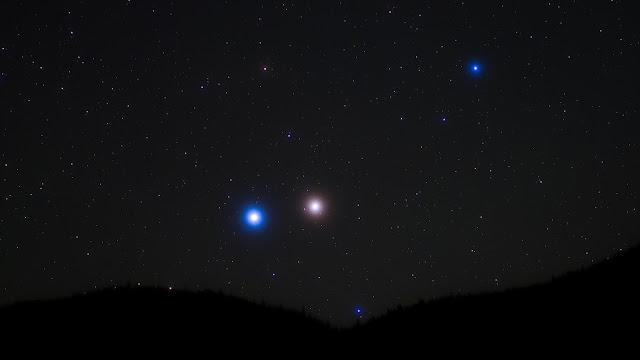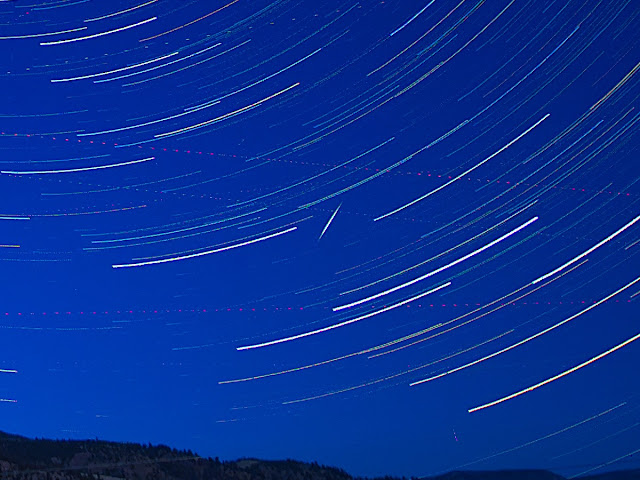New moon occurred on Wednesday 25 June. These images were obtained that evening. The sky brightness was measured as sqml=21.54 mpsas. This is not the best for this area, but is still decently dark. These were all taken with an Olympus E-M1iii + Sigma 56mm f/1.4 lens + Hoya Softon filter.
 |
| Antares and the head of Scorpius. ISO 1600, 60 s. |
This region is also known as the Rho Ophiuchi complex, for the spectacular dark and bright nebulae that are revealed in longer exposures. Rho Ophiuchi is the star circled in this image. Although it is less than 3° from Antares and seems to be within the head section of Scorpius, according to modern constellation boundaries it lies in the constellation Ophiuchus, hence the name.
 |
| The tail of Scorpius rising over the flank of Snowshoe Mountain. |
The two bright stars in the lower right quadrant are Lambda and Upsilon Scorpii. Closer to the center are two bright open clusters, M7 and M6.
 |
| The heart of the Milky Way. |
The Lagoon Nebula (M8) is just right of center. The Small Sagittarius Star Cloud is near the top. The center of our galaxy lies over near the right edge, obscured in visible light by dark clouds of dust and gas.
 |
| Sagittarius rising over Snowshoe Mountain. |
The bright star just above the peak of the mountain ridgeline is Nunki, Sigma Sagittarii. This region also contains the nearby star Ross 154, but I will save that for a later post.













































